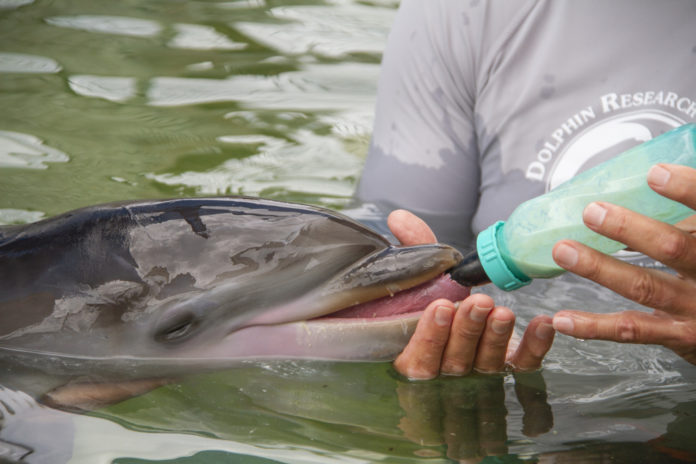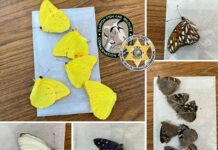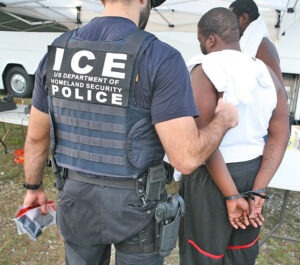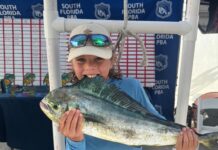
Dolphin Research Center’s newest flippered addition is in need of a few helping hands. Thankfully, she has dozens waiting in line.
When DRC staff came to work on the morning of May 31, they were treated to a small miracle in their lagoons: expecting 15-year-old mother Gypsi had given birth to a baby girl overnight.
Though they were overjoyed to finally lay eyes on the calf they had waited a year to meet, their initial reactions were tempered by immediate challenges. As is quite common for first-time dolphin mothers, Gypsi seemed confused as to how to best care for her youngling. The mother and daughter shared a lagoon for a short time with Gypsi’s own 48-year-old mother Tursi, who attempted to guide the calf but was unable to nurse it with the nutrient-rich milk that only her mother could provide.
In an effort to provide the infant with the nutrition and supervision she needed, DRC’s animal care experts elected to move the calf to the facility’s medical pool, a separate habitat that would allow her to be more easily supervised and bottle fed around the clock.

Since the move, the little one has had an endless rotation of animal care staff swimming by her side nearly 24 hours a day, including three-person, three-hour overnight shifts every night – even through last weekend’s tropical storm. Though she’ll venture off on her own at times, her comfort zone is what’s known as the echelon position – swimming slightly beneath the lower body of her caretaker, just as she would ordinarily do with her mother.
Early on, she even allowed trainers to “surf” her, laying on their chests for an easy ride around the surface of her pool. And when she’s tired, she simply cruises into her trainers’ arms and falls asleep for a quick nap.
Nutrition for the calf is one of the team’s main focuses, and though the little one’s mother is not physically present in the pool, Gypsi has pulled her weight in a different capacity. Some may be surprised to learn that as mammals, baby dolphins drink milk from their mothers by curling their specially-designed tongues to create a watertight seal around the nipple in the mother’s mammary slit.

After months of prep work with her trainers leading up to the birth, Gypsi has learned to voluntarily allow the team to extract milk from her mammary glands using gentle suction from a specially-designed dolphin equivalent of a breast pump. Using a combination of this milk and a special infant formula developed by SeaWorld, the baby receives nutrition through a bottle or small tube every 90 minutes, allowing her to take in the necessary fatty calories while still reaping the immune system benefits from her own mother’s milk. At just 30 pounds, weight gain over her first few weeks and months will prove critical for the youngling.
Though DRC’s cautiously optimistic staff has thrown every possible medical advantage at the baby dolphin, the little one remains in a guarded condition through such a vulnerable period of life. Dolphins experience high mortality rates through the first year in both wild and human care settings, and first-time pregnancies are always considered high risk. Some studies of dolphin life expectancies exclude animals that don’t make it through their first year.
DRC’s veterinary and animal care teams will continue to give the baby her best chance to thrive – a chance she more than likely would not have been afforded in the wild. The center has proven extremely successful in raising dozens of dolphin calves in the past, but the present situation is admittedly a first, even for them.
Thankfully, the team can rely on the experience of staff veterinarian Dr. Scott Gearhart, who has successfully raised neonates in his prior career at SeaWorld. The crew has listened to advice from other facilities that faced similar challenges, and has been more than happy to share its experiences with other organizations to add to the ever-growing knowledge base for newborn cetacean care.

According to CEO Rita Irwin, every day with the calf brings a need for constant reassessment as caretakers work to ensure comfort and efficiency for both Gypsi and her calf during milk collections and bottle feedings. Over the course of this interview, animal care staff elected to increase the frequency of the day’s feedings in order to help the baby pack on some pounds. The team leaves no stone unturned, experimenting with all aspects of her care – right down to, for example, the shape and rigidity of the nipple on her bottle.
With no readily available “cetacean bottle” on the shelves of animal care suppliers, DRC’s crew currently uses a version originally designed for bottle-feeding lambs. Providing just the right length and balance between flexibility and rigidity, the design allows the calf to securely latch on and drink without collapsing the nipple with her surprisingly strong tongue.
Adding round-the-clock care for the little one to the daily operations of a large facility has understandably left the staff exhausted. With at least two months to go until the baby can eat solid food, the crew knows they’re in for the long haul.
And yet, each one of them can’t help but smile as they move through a once-in-a-lifetime opportunity to hand-raise the infant. Getting staff to volunteer for shifts at all hours of the day and night isn’t a problem. But telling them to leave a baby dolphin and get some rest? That’s another story. And according to Irwin, she’d expect nothing less.
“It’s DRC at its finest,” she said. “If we could use every staff member, every single person would volunteer to be in here and help her. We say we’re a family, and when families have someone who needs urgent care, we all rally.”
For updates on the calf and donation opportunities to support Dolphin Research Center’s ongoing efforts, follow the facility’s Facebook page or visit www.dolphins.org.


















